Designing the Enterprise-C
The design process for the Enterprise-C began two years before the ship appeared on screen.
When Andrew Probert was designing the Enterprise-D, he prepared a design lineage to establish a continuity between Kirk’s ship and Picard’s, which was supposed to be the fifth in the line and almost a century older.
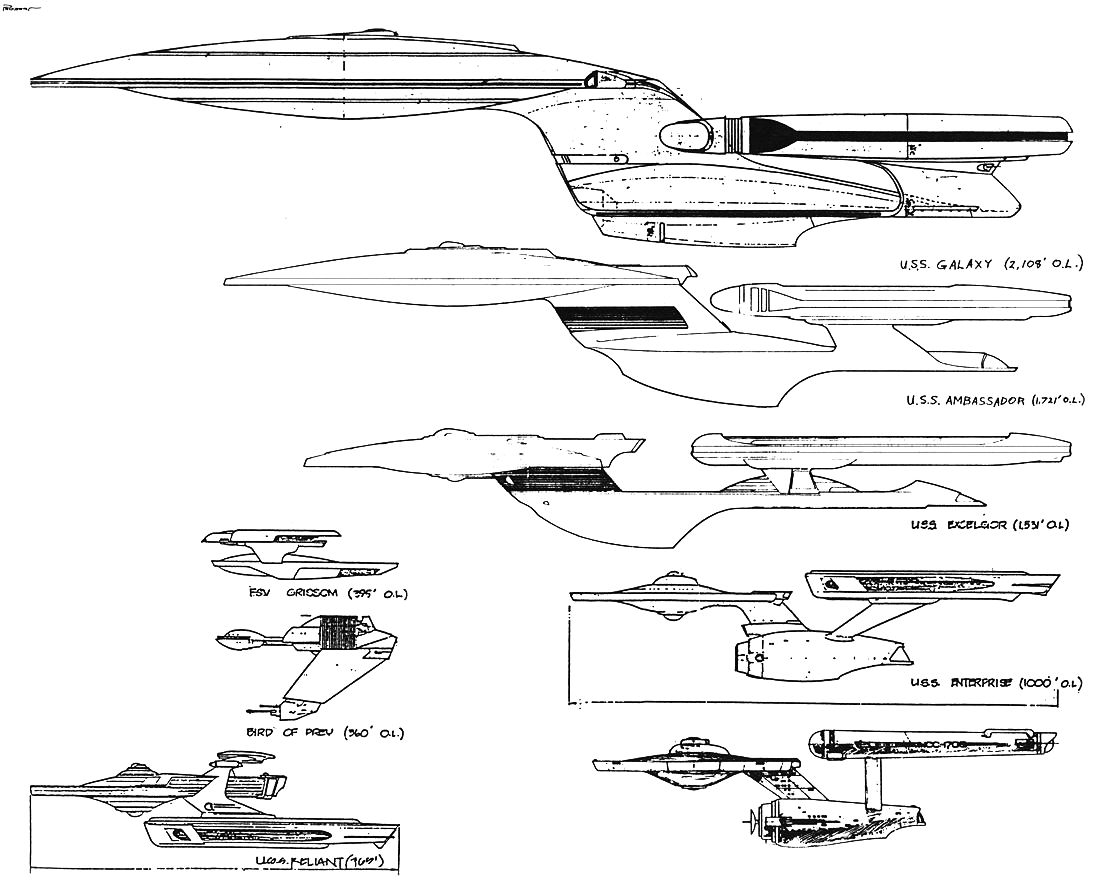
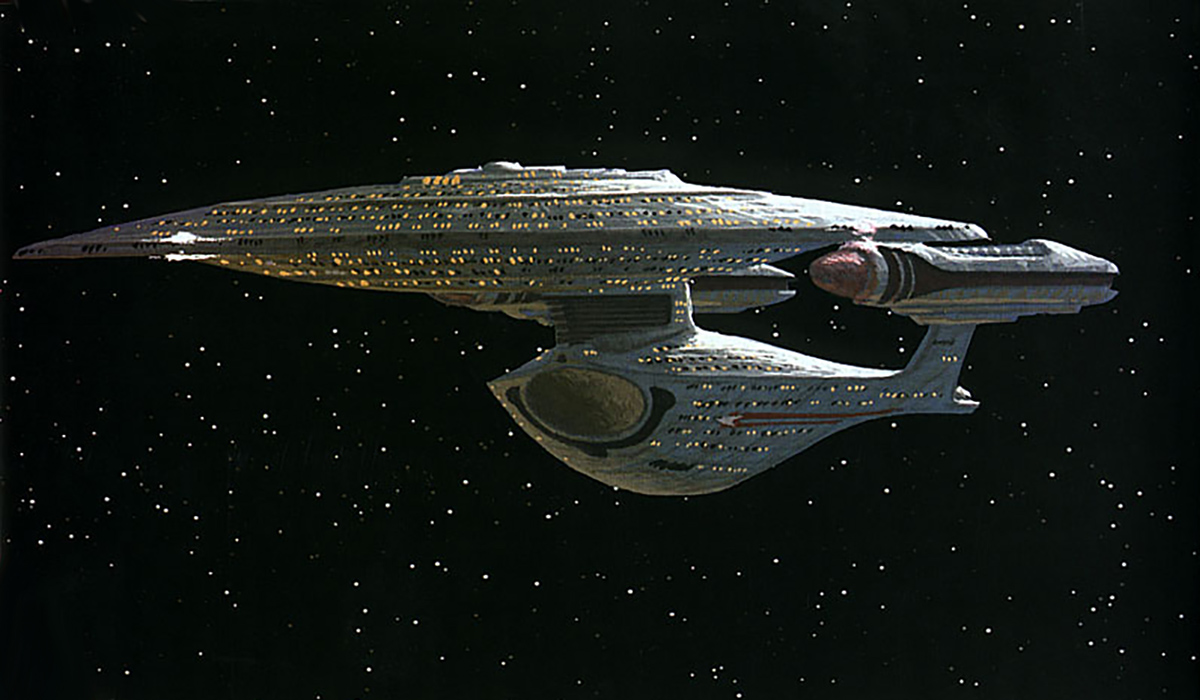
Probert assumed that the Enterprise-B had been an Excelsior-class starship. This wasn’t confirmed until Star Trek Generations, but a relief model of an Excelsior was included in the Enterprise-D’s observation lounge.
To build the relief of the “C”, Probert reasoned the ship would have design elements in common with both. “I wanted there to be evidence of the ‘C’ growing from the Excelsior and then the ‘D’ growing from the ‘C,'” he told Star Trek: The Magazine.
What I did was I took a side profile of the Excelsior and I took a side profile of the Galaxy class. Then I put them in the same scale one above the other and simply drew lines from one to the other at various important points, whether it was the saucer, the impulse engines, the bridge, the engineering hull, whatever. By doing that I came up with a composite which became the Enterprise-C.

Intermediate step
Since Probert left the show after the first season, the task of designing the Enterprise-C fell to Rick Sternbach during Season 3.
His thinking went similar to Probert’s:
The logical starting point for this design was an intermediate step between the Excelsior class and Galaxy class. This little color sketch of Andy’s from the first season looked like it would be great to start with. The nacelles were a bit different. I assumed from the sketch that it had more of a round saucer. It had a very Excelsior-looking neck.
Sternback took some of the ideas and threw up a top view and a side view in ortho.
I showed those to the producers and made the case that this would be an intermediate step and could very well be the Ambassador class.
Practicality
Sternbach had to be more practical than Probert in that his design needed to be less curved. “I remember making the cross section of the engineering hull circular, simply because it would make fabrication go faster,” he recalled.
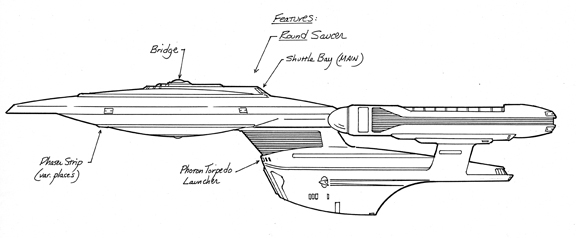
They also had to compromise on the shape of the saucer, as Michael Okuda recalled in 2008:
Round is indeed more expensive to build than sharp and square, but elliptical can be a lot more expensive than both. This was a big deal for a model that had to be built on a very tight schedule for an episode that was already very expensive.
Okuda and Sternbach quickly agreed to make the Enterprise-C’s saucer circular as well.
Rick will be the first to admit that the resulting design wasn’t as elegant as the original concept, but I think he did a great job of preserving as much as possible of Andy Probert’s vision while keeping the cost low enough that our producers wouldn’t be forced to reuse the Excelsior or the movie Enterprise.
Because they had little time to build the model, Greg Jein delegated the secondary hull to Ed Miarecki and fabrication of the warp nacelles — which Sternbach had intentionally oversized compared to the Enterprise-D’s — to David Merriman.
Following its introduction in “Yesterday’s Enterprise,” Jein modified the model to appear as different Ambassador-class starships in later episodes of The Next Generation.
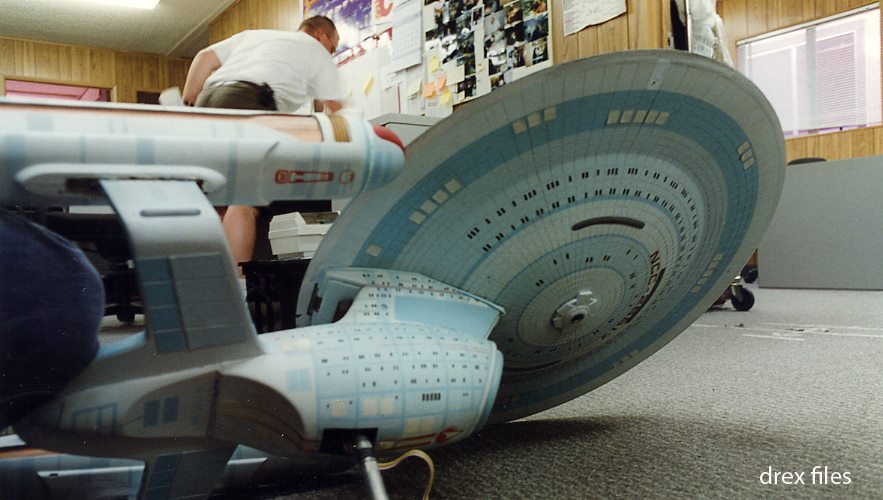
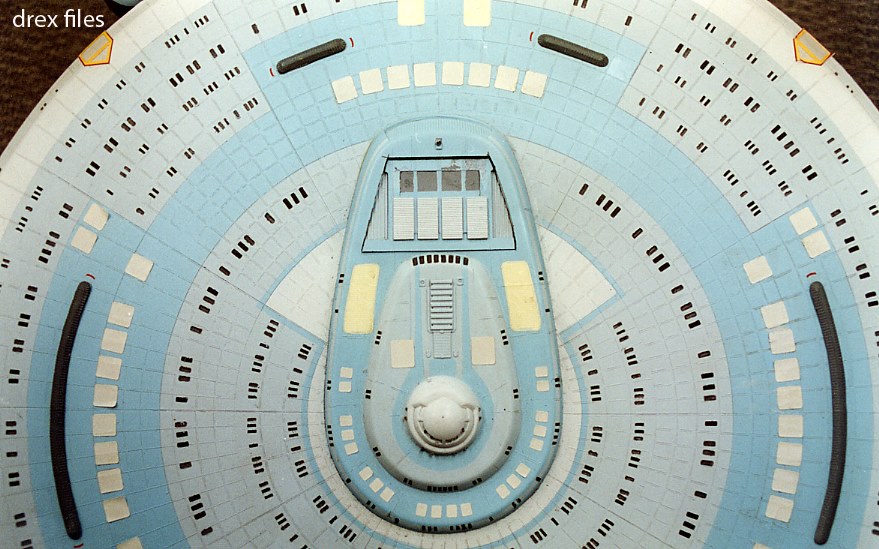
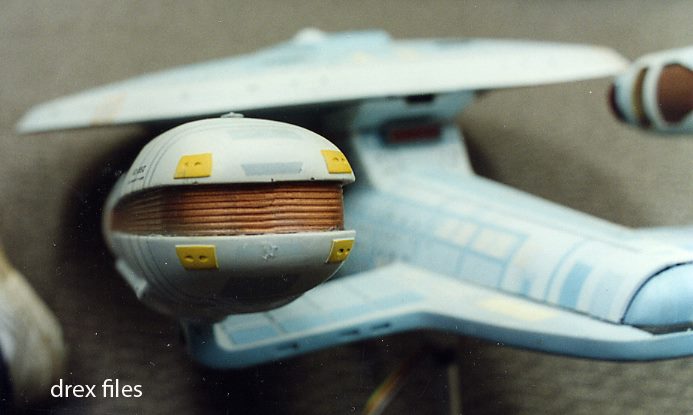
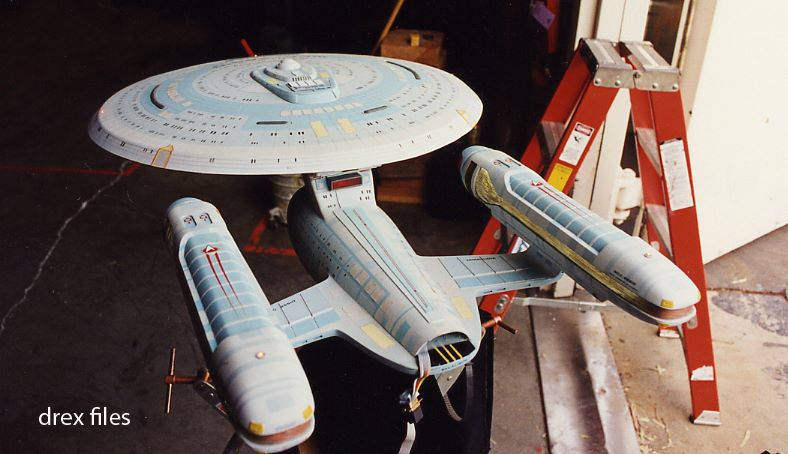
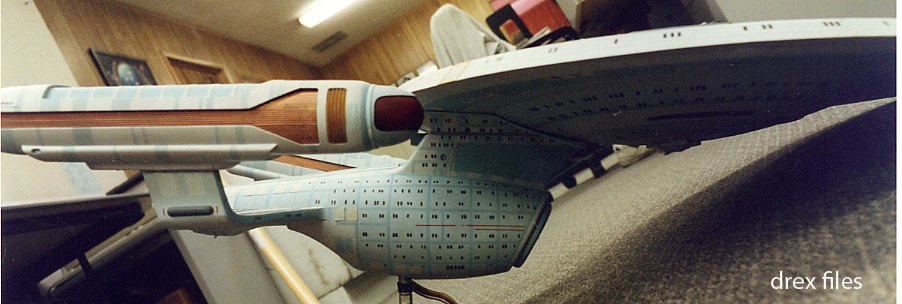
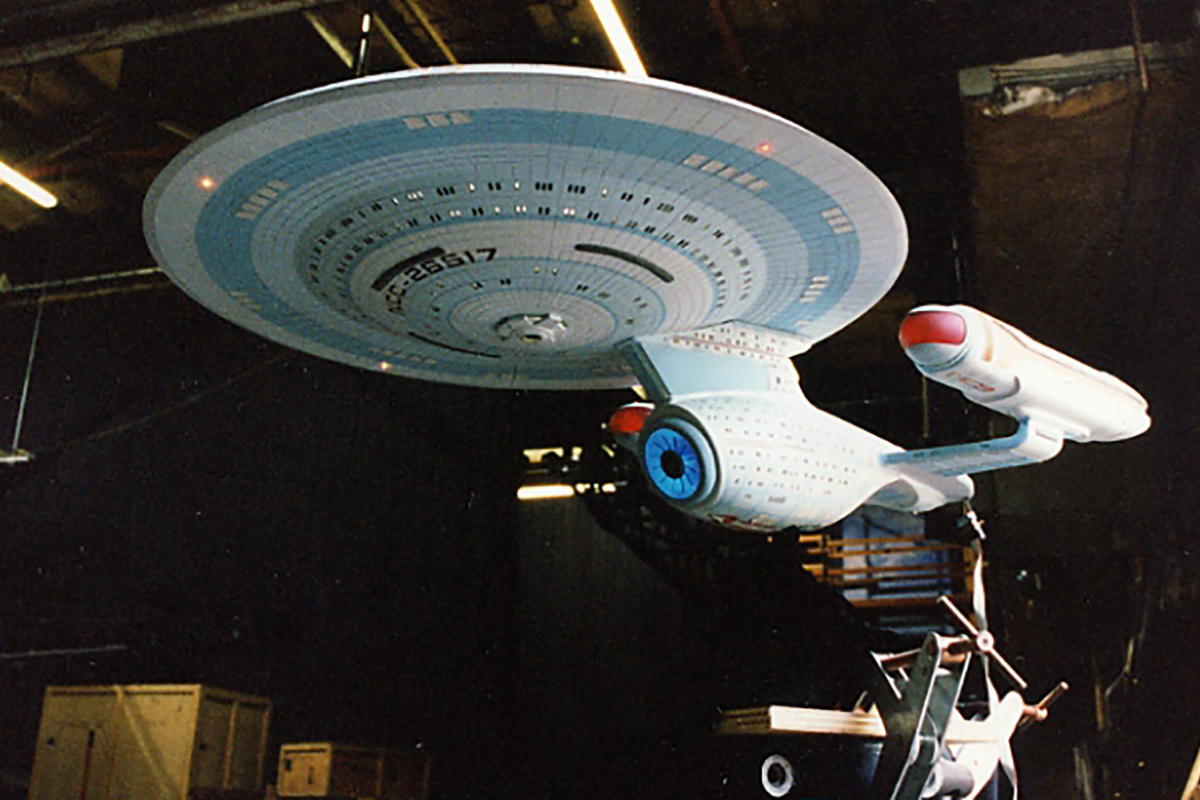

8 comments
Submit comments by email.